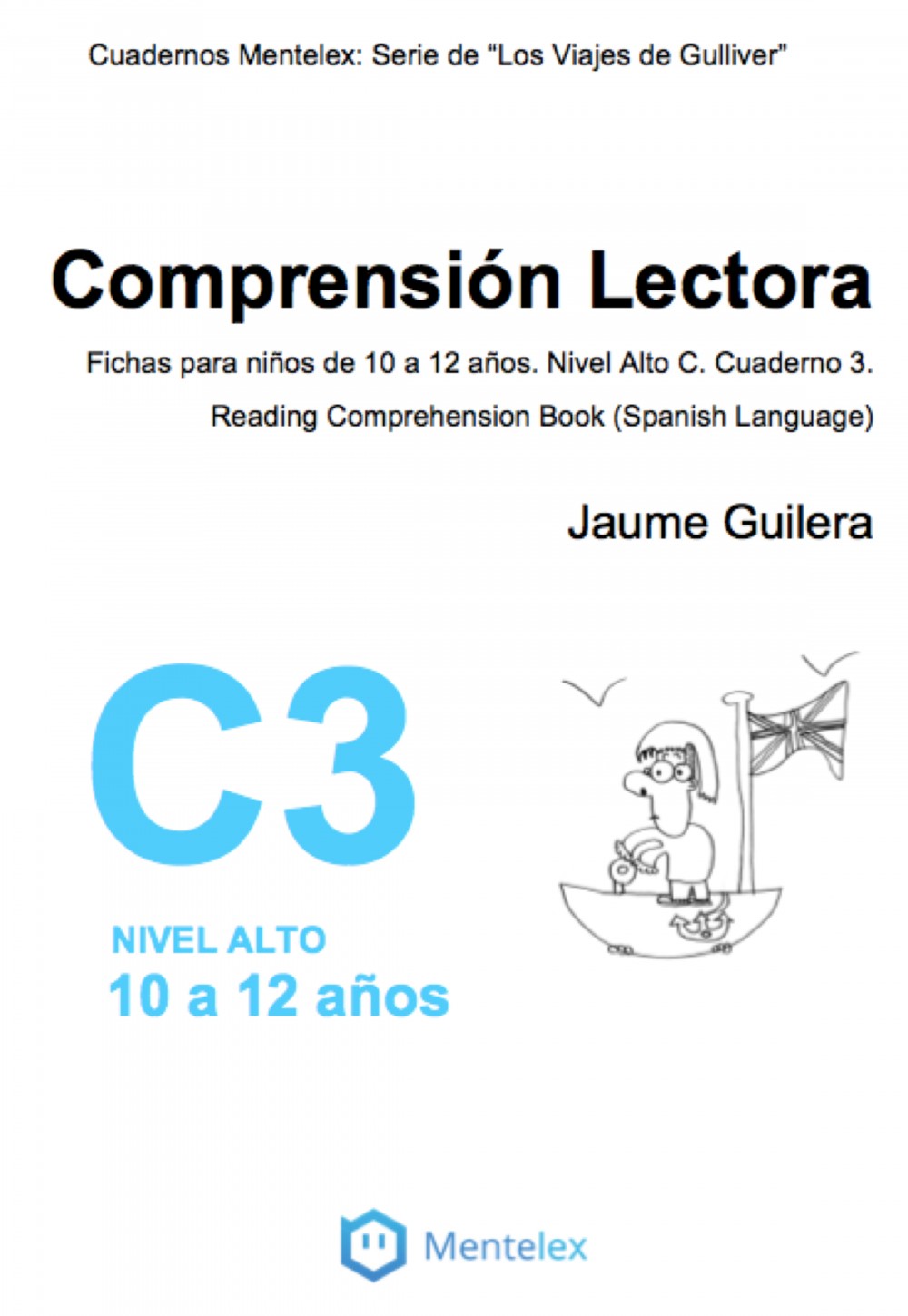
Evotextos to improve reading comprehension
Evotextos’ method to improve reading comprehension
Method presentation
Welcome to the world of “evotextos” or “evolutive texts”. Is an original method to improve reading comprehension, created by Dr.J.Guilera. This method is subjected to the author’s rights and recognized by “Generalitat de Catalunya” as a scientific work. In that method we have tried to create four different versions of the classic “Los viajes de Gulliver” from Jonathan Swift.
Each of the four version has it owns level of reading difficulty. From each level we have created reading comprehension worksheets for every day. One reading and five questions of the same reading compose those sheets. Level A is easy to read and the questions are easy to answer. Level B is a little bit difficult to read and answer. Level C is a bit more difficult than A and B. And level D is the most difficult to read. As an orientation, level A is for children of 6-8 years old, level B for 8-19 years old, level C for 10-12 years old and finally level D for children of 12 years or more.
This method consists on doing one worksheet everyday, starting at level A. Moreover, the daily worksheet it has to be read at least three times. Each time you read the text, you must answer the questions below. That means you have at least three opportunities to answer them correctly.
If you improve reading comprehension, you’ll answer more correct questions on the first trial. The idea is that you may have to change the level of readings as you improve. This might happen when in 10 consecutive readings you answer all the questions correctly at the first trial.
At the end of each book, you’ll find the following methodology and more indications of how to work with the worksheets.
How reading comprehension sheets must be made: Methodology
Each sheet corresponds to a training day, so you must do one reading each day, weekends included. We recommend you not to do more that one sheet per day. You should do three attempts per sheet. Also, it would be useful to use another notebook to write down the results of those readings.
First reading
- Reading aloud by the supervisor (parent, teacher …).
- Answer the questions.
Second reading
- Reading aloud simultaneously child and supervisor.
- Answer the questions.
- Choose three words from the reading that you do not understand and write a sentence with each of them.
Third reading
- Child reading aloud, changing everyday the vowels of text as it is explained on this figure. For example, if we are on the first day we will change A for E so for “The black cat” we will say “The bleck cet”
Day 1: A-E; Day 2: E-I; Day 3: I-O; Day 4 O-U; Day 5: U-A
- Once you arrive on the 5th day, the wheel starts again with the next reading. Write at the top of each reading the vowel change.
- Answer the questions again, but this time do it in a written and grammatically correct manner.


